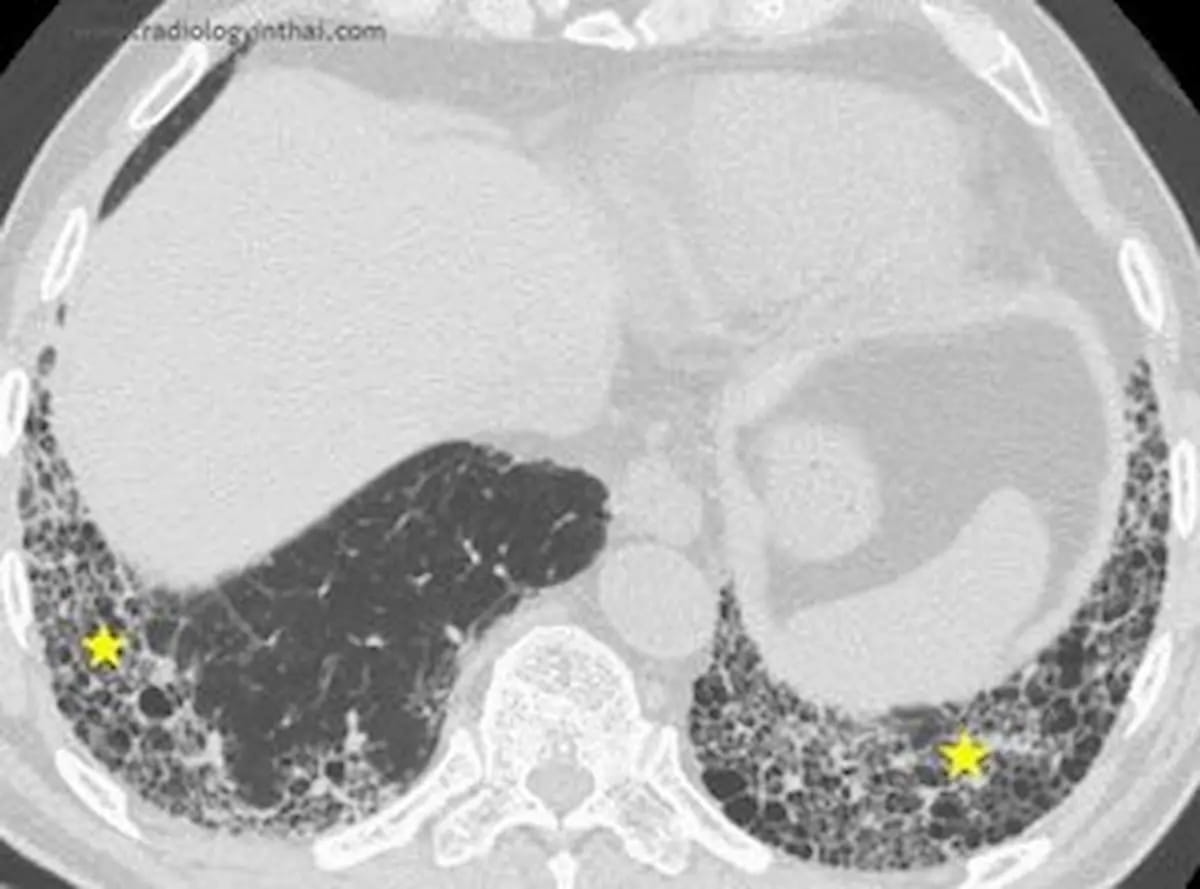FDA Clears CT-Based AI Software for Enhanced Detection of Usual Interstitial Pneumonia
The IQ-UIP AI software may bolster computed tomography diagnosis of usual interstitial pneumonia (UIP), which is reportedly misdiagnosed in over 50 percent of cases.
The Food and Drug Administration (FDA) has granted 510(k) clearance for IQ-UIP, an artificial intelligence (AI)-powered software for enhancing computed tomography (CT) diagnosis of usual interstitial pneumonia (UIP).
Leveraging deep learning technology, IQ-UIP provides automated analysis of conventional CT scans with rapid detection of UIP patterns such as honeycombing and subpleural fibrosis, according to 4DMedical, the developer of IQ-UIP.
In addition to facilitating improved detection of usual interstitial pneumonia (UIP) on standard CT scans, 4DMedical says the newly FDA-cleared AI software IQ-UIP provides automated referral workflows for specialists who treat UIP. (Image courtesy of RadiologyinThai.com )

Emphasizing that more than 50 percent of UIP is initially misdiagnosed, 4DMedical noted the condition’s non-specific symptomatology may mimic other conditions such as asthma and chronic obstructive pulmonary disease (COPD).
In addition to a rapid diagnosis of UIP, which is characterized by chronic inflammation and progressive lung fibrosis, 4DMedical said IQ-UIP provides automated referral workflows for specialists, facilitating timely care for a condition that has a median survival of one to two years after diagnosis.
Meta-Analysis Shows Merits of AI with CTA Detection of Coronary Artery Stenosis and Calcified Plaque
April 16th 2025Artificial intelligence demonstrated higher AUC, sensitivity, and specificity than radiologists for detecting coronary artery stenosis > 50 percent on computed tomography angiography (CTA), according to a new 17-study meta-analysis.
New bpMRI Study Suggests AI Offers Comparable Results to Radiologists for PCa Detection
April 15th 2025Demonstrating no significant difference with radiologist detection of clinically significant prostate cancer (csPCa), a biparametric MRI-based AI model provided an 88.4 percent sensitivity rate in a recent study.